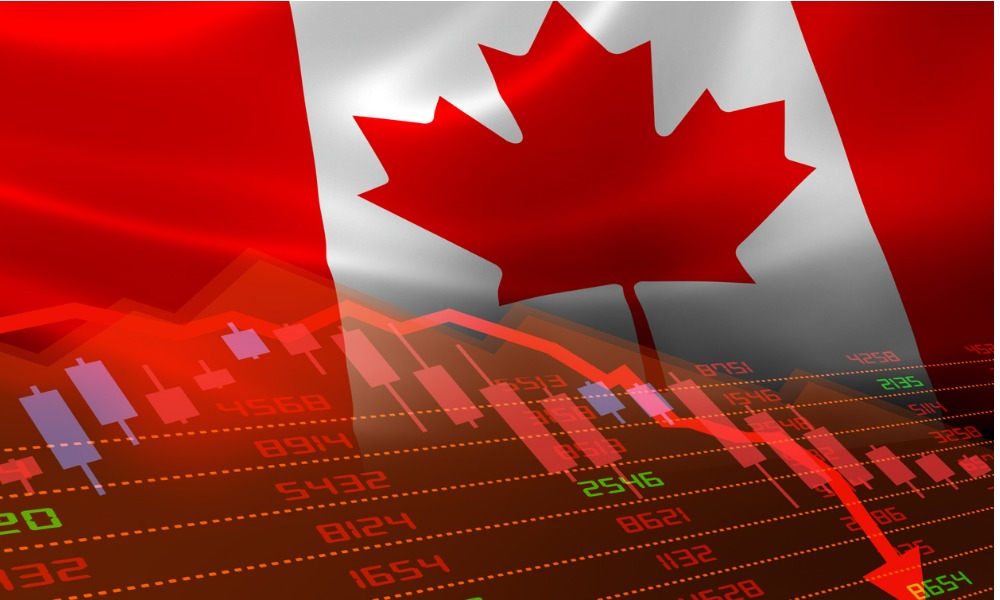Tariffs, supply delays, and low confidence push Canadian economy into back-to-back quarterly declines

A projected 13.0 percent collapse in private investment in Q2 2025 and a further 6.9 percent drop in Q3 mark the steepest pullback since the pandemic, signalling heightened uncertainty for capital allocation and asset planning across sectors.
The Canadian Federation of Independent Business (CFIB), in collaboration with AppEco, reported that Canada’s economy contracted by 0.8 percent in Q2 and is expected to shrink by another 0.8 percent in Q3.
Persistent trade tensions, weakened confidence, and fragile conditions in goods-producing industries—including transportation, machinery, and oil and gas—are driving the downturn.
Retail sales rose 4.6 percent in Q2 in nominal terms, but growth is expected to slow to 2.0 percent in Q3 as tariff impacts ripple through supply chains.
Meanwhile, payroll employment is forecast to decline by 1.1 percent in Q2 and 0.8 percent in Q3, following a 0.4 percent gain in Q1.
Inflation remained relatively stable, easing to 1.8 percent in Q2 and forecast to inch up to 1.9 percent in Q3.
Energy and travel costs declined, while food and shelter costs maintained upward pressure on the Consumer Price Index.
Long-term optimism among businesses continued to deteriorate. The wholesale sector’s confidence dropped from 57.7 in Q2 2024 to 33.3 in Q2 2025—below pandemic levels.
Sector-wide, the national index fell from 53.3 to 40.5 over the same period.
A 15 percent decrease in the number of wholesale businesses with employees and a 49 percent drop in the number of self-employed in the past decade reflect the contraction in economic activity.
Wholesale firms are reacting by adjusting pricing strategies.
Average planned price increases for the sector over the next year reached 3.9 percent, exceeding the 3.0 percent national average.
Input cost pressures and trade uncertainties were cited by 49 percent of wholesale businesses.
Canada’s private sector job vacancy rate held at 2.8 percent in Q2, equivalent to 397,500 open positions.
Vacancy rates remained highest in personal services (4.6 percent) and construction (4.2 percent), with small businesses reporting the largest share of unfilled roles.
Ongoing tariff-related border delays have emerged as a major bottleneck.
In May, 35 percent of SMEs reported spending a median of two extra hours at the Canada–US border due to administrative formalities.
Wholesale and manufacturing firms—most reliant on just-in-time shipments—were hit hardest, with 42 percent and 40 percent respectively reporting cross-border disruptions.
Supply constraints were also reported by 36 percent in retail and 35 percent in construction.
While 62 percent of SMEs have shifted toward domestic suppliers, issues persist.
Half of businesses sourcing internationally and 44 percent sourcing domestically are unsure how long disruptions will last.
Among those offering a timeline, 27 percent expect international delays and 32 percent domestic delays to persist for more than a year.
Simon Gaudreault, CFIB’s chief economist and vice-president of research, said that while a contraction in the economy is expected, certain indicators suggest it is also normalizing.
He added that “inflation remains stable which puts us in a favourable position to contemplate easier monetary policy for the second half of the year.”
However, with inflation at 1.9 percent and job gains in June, Gaudreault noted the Bank of Canada “may now decide to maintain its interest rate on July 30.”
He added that the ‘one step forward, one step back’ trade situation is fuelling low business confidence and leading to delayed or cancelled investments.
“As trade tensions drag on,” he said, “more businesses will be slowly adjusting to tariff threats and finding alternatives.”


